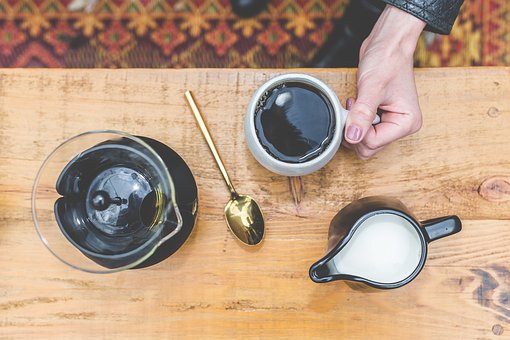
.........a refined black coffee concentrate that is smooth and sweet.
Coffee can be brewed one of two ways. Hot or cold. You may have heard terms such as cold brew, cold drip or cold press coffee - this really just refers to the process. Don't confuse this type of coffee with iced coffee which is brewed hot and served with ice!
The most popular method is obviously hot brew but I find cold brew really showcases the distinct flavours a particular origin farm has to offer.
So, how is it done? You need a lot more patience with a cold brew coffee but the results are worth it. The process generally is as follows:
- Get your freshly roasted coffee beans (I've heard Bay Coffee has the best :)) - coarsely ground, not too fine (Our friendly staff can help you with that)
- Steep the coffee grounds, preferably in room temperature filtered water (chilled water can also be used) anywhere from three to twenty-four hours.
- Strain the water using your brew gear of choice - paper filter or a fine metal sieve, a French press or Toddy system.
...and the result? The result from this hard work and patience is a refined black coffee concentrate that is smooth and sweet. I find customers have their own favourite way of enjoying cold brew but I guess you should try them all first to work out which one you like - over ice, with mineral water, milk, or try it Vietnamese style with sweetened condensed milk.
a note on ratios: the standard ratio of coffee to water is 1 part coffee to 4 parts water but you can play around with this ratio depending on how you like it..
But what about the science? As the title suggests I did promise to enlighten you on the science behind cold brew.
Basically, the process of leaching flavor from the beans with room temperature water produces a different chemical profile that naturally seems sweeter and more floral due to its lower acidity. Although the difference between the two methods seems straight forward, the science really comes down to the flavour profile differences of the coffee grounds comprising of both volatile and non-volatile components e.g. oils, acids, and aromatic molecules referred to as “coffee solubles”
Because temperature affects the solubility and volatility of the coffee solubles:
- Hot brew coffees are more readily soluble therefore more full-bodied, flavourful and aromatic. However simultaneously oxidation and degradation also occurs at high temperatures, which can cause coffee to taste bitter.
- Cold drip has decreased solubility in room temperature water. Increasing the brew time over many hours maximizes extraction of the solubles plus doubling the amount of coffee also makes up for the lower extraction rate, producing a flatter, less aromatic and virtually non bitter or acidic coffee, especially if it is kept cold.
I need my caffeine...It is also interesting to note, brew time does not determine caffeine content, similarly bitterness doesn’t indicate coffee strength. Hot or cold caffeine is extracted early in the brewing process, so extending brew time, by either method, only results in over-extracted coffee. Where as coffee strength is defined by the amount of dissolved coffee solubles per unit of coffee volume. In which case cold drip certainly produces stronger coffee, given the cold drip process purposely concentrates the coffee solubles.
So next time you visit us at our Neutral Bay Micro Roastery, why don't you try our smooth, delicious cold brew coffee brewed using one of our freshly roasted single origins. Or, if you want to cold brew at home we can grind the beans just right depending on the gear you use.
